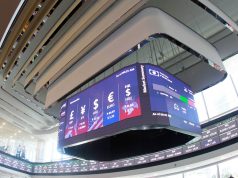THE Department of Energy (DoE) said it expects new policies now in place to encourage investment in renewable-powered facilities serving remote areas.
“Recognizing the need to break barriers to investment, we have put in place additional policies that will dispel fears of potential investors,” according to Energy Undersecretary William B. Fuentebella, who delivered the message of Secretary Alfonso G. Cusi on Tuesday during the DoE’s energy investment forum at the Hilton Manila Hotel in Pasay City.
The forum is the DoE’s annual event to announce investment opportunities in the energy sector.
“In October, we issued the omnibus guidelines governing the award and administration of renewable energy (RE) contracts and the registration of renewable energy developers to harmonize and enhance existing guidelines and procedures governing the transparent and competitive system of registering and awarding RE projects,” Mr. Fuentebella said.
He said the DoE has also come up with “competitive RE zones” to address investor concerns on the availability of transmission lines for power projects.
“Come and invest in our country. We are open for business. We look forward to welcoming you as our partner for development. We have the investment promotion office to guide,” he told the forum’s participants, who included representative of foreign embassies.
The DoE expects demand for power to hit 43,765 megawatts (MW) by 2040. It projects added capacity of 25,265 MW from baseload plants or those that are running continually, and 14,500 MW from mid-merit plants or facilities that can easily be switched on or off.
The department expects Luzon to require 24,385 MW of additional capacity by 2040. The forecasts for the Visayas and Mindanao are 9,180 MW and 10,200 MW.
Based on DoE figures, only 6,239.20 MW in “committed” capacity is expected in the coming years, well below the demand projections. “Indicative” projects or those that have yet to finalize their financing are estimated at 42,507.1 MW.
During the forum, Mr. Fuentebella again talked about the DoE’s policy of being technology agnostic, saying there is no “one-size-fits-all” approach for an ideal energy mix “so both conventional and non-conventional sources must be considered.”
“Developing countries, like the Philippines, will need cost-efficient and reliable energy to meet its economic potential,” he said.
He also called for investment in remote areas where electricity remains unreliable. The administration aspires for 100% electrification by 2022.
“The Philippines’ unique situation of being archipelagic and prone to natural disasters must delve into electrification options that will provide continued electricity service. In the case of off-grid areas, solutions may be the implementation of micro-grid and distributed generation system,” he said.
Mr. Fuentebella said of the country’s 7,641 islands, up to 1,702 potential off-grid sites are available for investors to develop. These sites will potentially serve 2,399,108 households.
Asked to comment, Ma. Theresa C. Capellan, who chairs the Philippine Solar and Storage Energy Alliance, said: “Mas tapos na lahat ng policies ngayon. (The policies are comprehensive). They (will end) the year on a positive note because all the policies which they started three years ago have been executed and published in a circular.”
“In the next three years before the end of the term ni Presidente (Rodrigo R. Duterte) the challenge is for them to implement it,” she said.
Ms. Capellan said challenges remain, including harmonizing the rules issued by the regulator, Energy Regulatory Commission (ERC), and policy maker DoE.
“CSP (competitive selection process), for example. There are four different versions. There is the Senate version, there is the DoE version, there is an ERC version and there is a NEA (National Electrification Administration) version,” she said.
Rufino B. Bomasang, chairman of the Philippine Petroleum Association, said times have changed since the 1990s when power developers had guaranteed buyers. But he said big investors seem to be absent in oil and gas exploration.
“I don’t see much response to the government’s call for exploration. Wala pa akong nakikita major, major oil companies, karamihan locals and small foreign companies (I do not see oil majors. Most of them are locals and small foreign countries),” he said. — Victor V. Saulon



